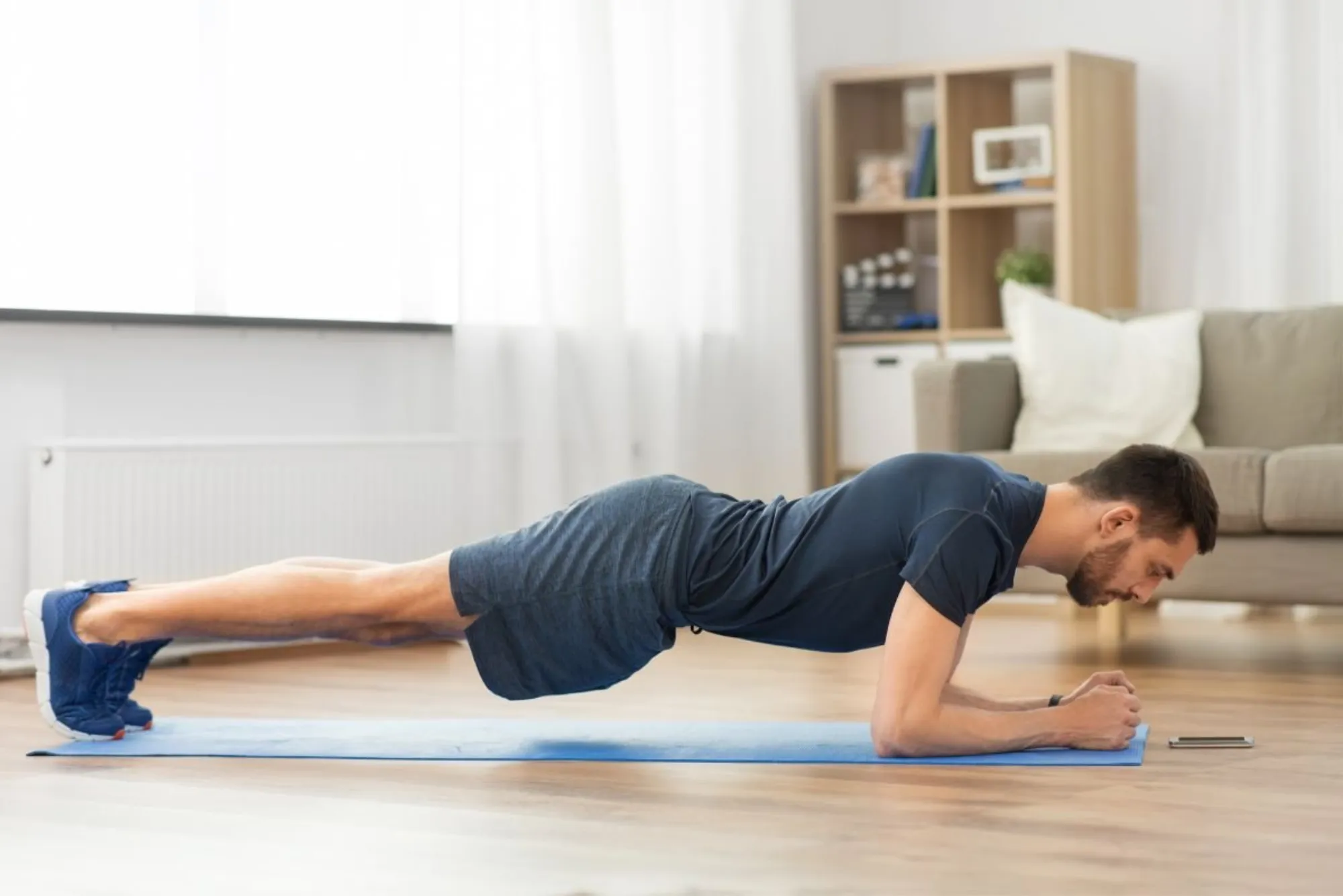Isometric exercises are a unique form of strength training that involve muscle contractions without any movement in the surrounding joints. Unlike dynamic exercises, where muscles change length and joints move through a range of motion, isometric exercises focus on maintaining a static position. This type of exercise is essential for building strength, improving stability, and enhancing overall fitness without the strain associated with dynamic movements.
Benefits of Isometric Exercises
Isometric exercises provide several significant benefits:
Strengthening Muscles without Movement: These exercises are perfect for individuals recovering from injuries or those who need to build strength without the strain of dynamic exercises. They help maintain muscle mass and strength by engaging muscles statically.
Enhancing Stability and Endurance: Isometric exercises are particularly effective at improving muscle endurance and stability. They engage multiple muscle groups simultaneously, especially the core muscles, which are crucial for overall stability and balance.
Improving Posture and Flexibility: Regular practice of isometric exercises can correct poor posture and increase flexibility. By strengthening the muscles that support the spine and other joints, these exercises help maintain a healthy and upright posture, reducing the risk of injuries.
Common Isometric Exercises
Several isometric exercises are popular due to their effectiveness and simplicity:
- Planks: This exercise engages the core, shoulders, and back muscles. It involves holding the body in a straight line, supported by the forearms and toes, for a set duration.
- Wall Sits: In this exercise, you sit against a wall with your knees bent at a 90-degree angle, as if sitting in an invisible chair. It primarily targets the quadriceps, hamstrings, and glutes.
- Isometric Squats: Holding a squat position without moving up or down focuses on strengthening the lower body muscles, including the thighs and glutes.
- Isometric Push-Ups: This exercise involves holding the body in a lowered push-up position, which targets the chest, triceps, and shoulders.
Isometric Exercises in Different Settings
Isometric exercises are versatile and can be performed in various settings, making them accessible for everyone:
Home Workouts: These exercises require minimal or no equipment, making them ideal for home workouts. They can be easily incorporated into daily routines without the need for a gym membership.
Gym Routines: Isometric Exercises can complement traditional gym workouts. They can be integrated into weightlifting or bodyweight routines to enhance muscle endurance and stability.
Retreats Yoga and Meditation Practices: Many yoga poses, such as the plank and chair pose, are essentially isometric exercises. Integrating these into retreats yoga and meditation can enhance both physical and mental well-being. The combination of holding poses and deep breathing in a serene environment maximizes the benefits.
How to Perform Isometric Exercises Safely
Performing isometric exercises safely is crucial to prevent injuries and maximize benefits:
- Proper Techniques and Form: Maintaining correct posture is essential. For example, when doing a plank, ensure your body forms a straight line from head to heels without sagging or arching your back.
- Common Mistakes to Avoid: Avoid holding your breath while performing these exercises. Instead, practice deep, steady breathing. Overexertion should be avoided, especially for beginners or those with medical conditions.
- Importance of Warm-Up and Cool-Down: Always warm up before starting any exercise to prepare your muscles and joints. After completing the exercises, a cool-down period with stretching helps relax the muscles and prevent stiffness.
Isometric Exercises for Specific Goals
Building Core Strength: Exercises like planks and isometric leg raises are highly effective for building core strength. A strong core is vital for overall stability and supports almost all physical activities.
Enhancing Athletic Performance: Athletes can benefit from isometric exercises by improving muscle endurance and strength. These exercises can be tailored to mimic the static positions held during various sports, enhancing performance.
Rehabilitation and Physical Therapy: Isometric exercises are often used in rehabilitation programs at the Right Medical Centre. They are safe for patients recovering from injuries or surgeries, as they do not involve joint movement, reducing the risk of aggravating existing conditions.
Isometric Exercises and Overall Wellness
Isometric exercises contribute to overall wellness in several ways:
- Mental Health Benefits: These exercises help reduce stress and improve mental focus. The act of holding a position and concentrating on steady breathing can have a meditative effect, promoting mental clarity and relaxation.
- Stress Relief through Isometric Exercises: Holding poses can be meditative and calming. The focus required to maintain positions helps shift attention away from stressors, providing a mental break and promoting a sense of calm.
- Integrating Isometric Exercises into Daily Routine: Experts at the right medical centre recommend incorporating these exercises into daily routines. They are easy to perform anywhere and can be adapted to fit any schedule, making them an excellent addition to a balanced fitness regimen.
Combining Isometric Exercises with Other Fitness Regimens
Isometric exercises can be effectively combined with various fitness programs to enhance overall health and performance:
- Synergy with Aerobic Workouts: Combining isometric exercises with aerobic workouts can enhance cardiovascular health while building muscle strength and endurance.
- Complementing Weight Training: Isometric exercises can be used to improve muscle stability and strength, complementing dynamic weight training exercises and reducing the risk of injuries.
- Role in Holistic Health Programs: These exercises are often included in holistic health programs, such as retreats focused on yoga and meditation. They contribute to a well-rounded approach to health and wellness, addressing both physical and mental aspects.
Isometric Exercises for Different Populations
Isometric exercises are suitable for various populations, making them accessible to everyone:
- Beginners: These exercises are simple and easy to start with, providing an effective way to build strength and stability without requiring extensive experience or equipment.
- Seniors: Isometric exercises are low impact, reducing the risk of injury. They help maintain muscle mass and strength, which is crucial for seniors’ mobility and overall health.
- Athletes: Athletes can use isometric exercises to enhance performance by improving muscle endurance and stability. These exercises can also help prevent injuries by strengthening the muscles used in their specific sports.
- Patients with Specific Conditions: At the right medical center, personalized isometric exercise programs are designed for patients with specific conditions. These programs help patients regain strength and improve their quality of life in a safe and controlled manner.
Case Studies and Success Stories
Testimonials from Participants retreats yoga and meditation: Participants have reported significant improvements in both physical and mental health. The combination of isometric exercises with yoga and meditation provides a holistic approach to wellness.
Patient Recoveries at Right Medical Centre: Numerous success stories highlight the effectiveness of isometric exercises in rehabilitation. Patients recovering from surgeries or injuries have regained strength and mobility through these exercises.
Transformation Stories: Individuals who have consistently practiced isometric exercises have experienced remarkable transformations in their fitness levels and overall well-being. These stories serve as inspiration and motivation for others to incorporate these exercises into their routines.
Isometric exercises are a vital component of any fitness regimen, offering numerous benefits for strength, stability, and overall health. Whether integrated into home workouts, gym routines, or retreats focusing on yoga and meditation, these exercises are versatile and effective. With guidance from experts at the Right Medical Centre and incorporating these exercises into daily routines, individuals can achieve improved physical and mental health.








